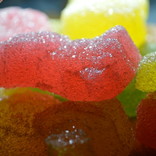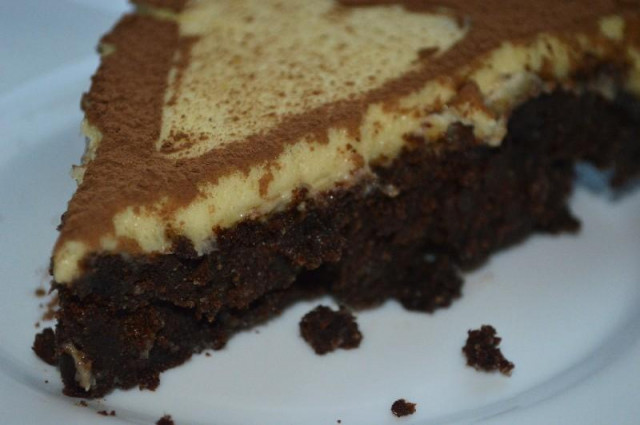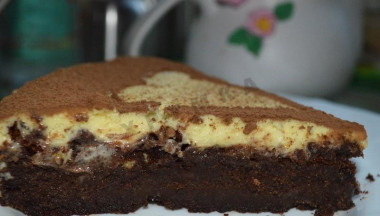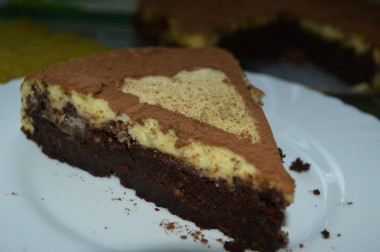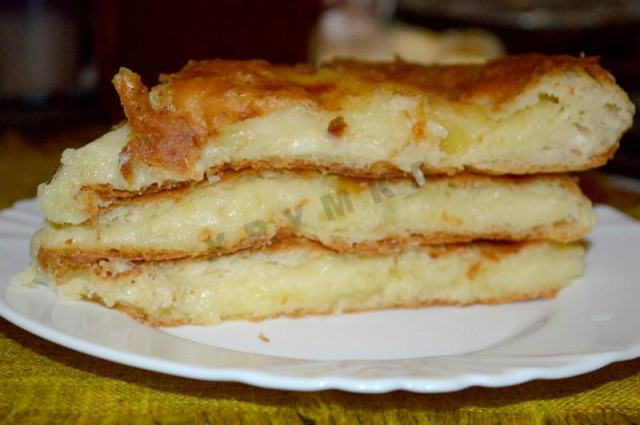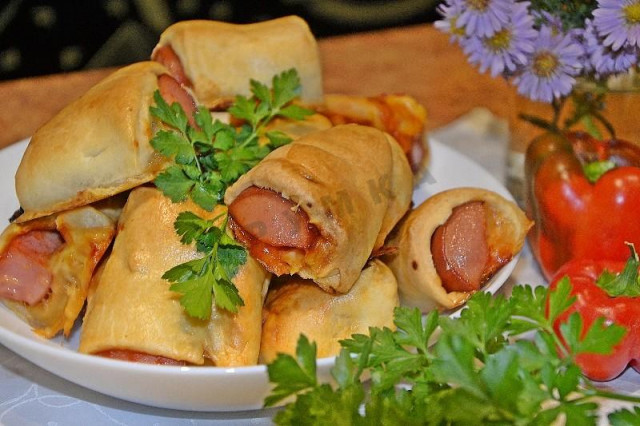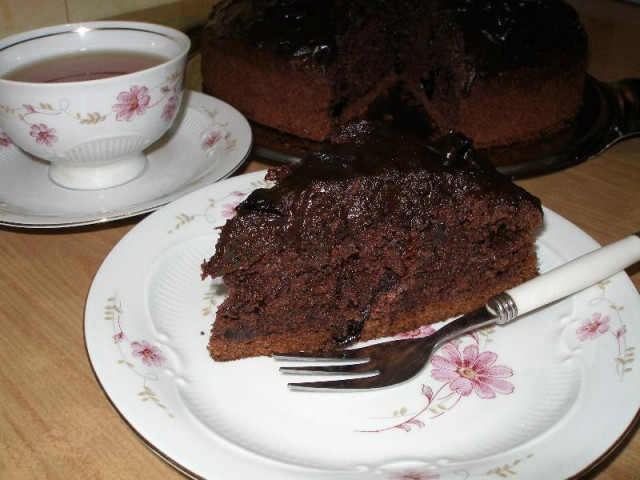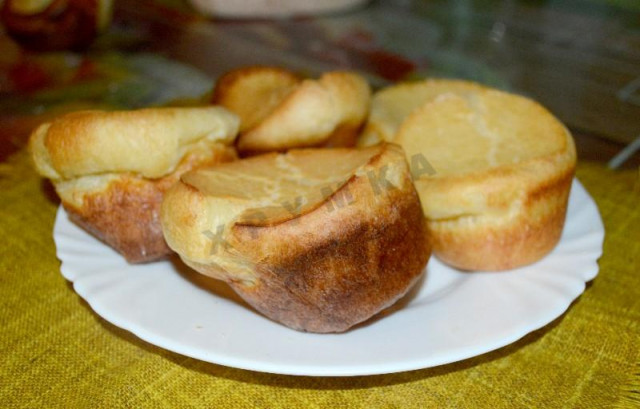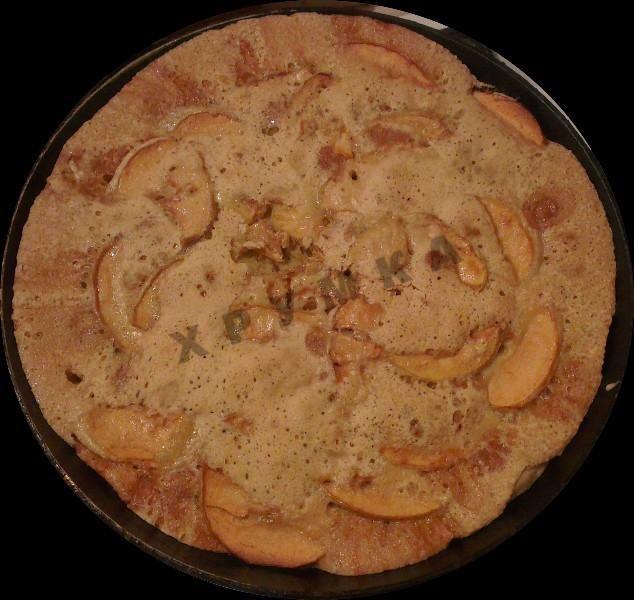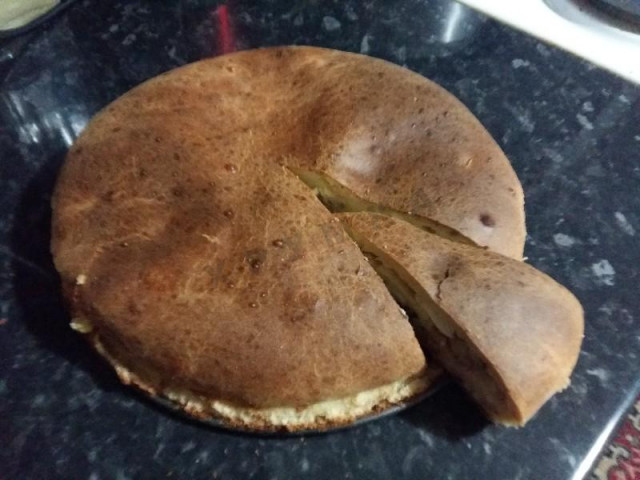Composition / ingredients
Step-by-step cooking
Step 1:
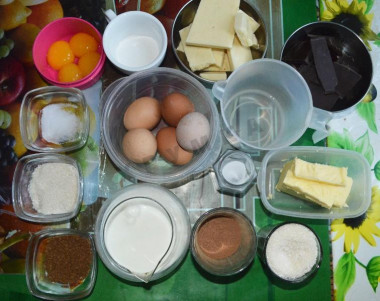
Prepare all the products. The water should be warm, the oil at room temperature, the yolks for the mousse are separated from the proteins, the chocolate is broken into cubes. Immediately turn on the oven at 170 degrees. The form is covered with parchment.
Step 2:

Melt the butter together with the chocolate in a water bath
Step 3:
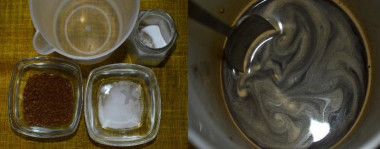
Dissolve coffee, salt and vanillin in warm water
Step 4:
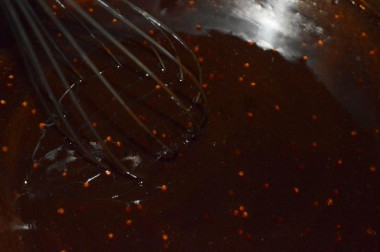
Mix until smooth
Step 5:
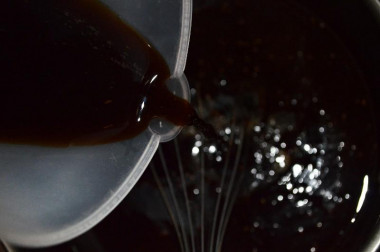
Pour the coffee mixture into the chocolate mixture, stirring
Step 6:
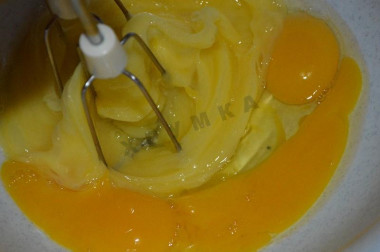
Beat the eggs
Step 7:
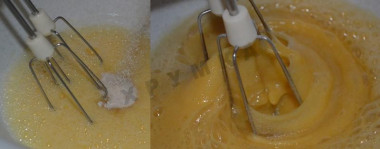
Add sugar and continue whipping until fluffy foam
Step 8:
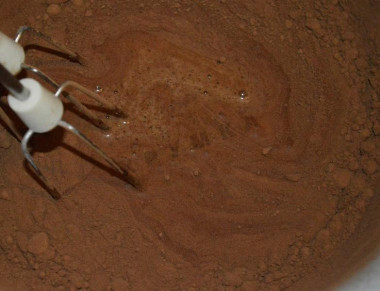
Pour in the cocoa and gently stir
Step 9:
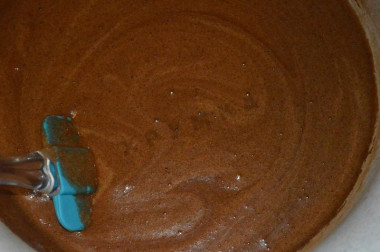
Pour in the chocolate mixture and stir as when making a biscuit. Pour it into a mold and send it to bake . The temperature is 170 for 50 minutes.
Step 10:
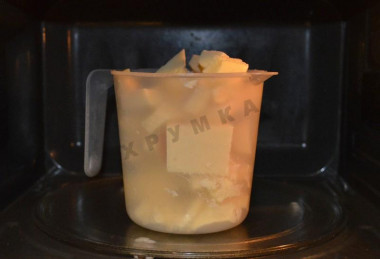
Chocolate and butter are sent to the microwave for 2 minutes at a power of 280, periodically take out and stir, follow the process carefully
Step 11:
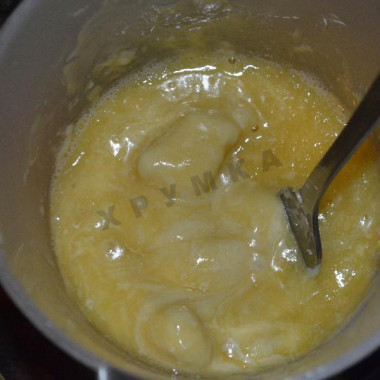
Take out and mix well
Step 12:
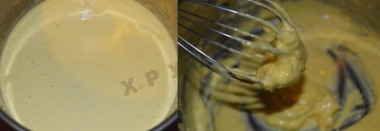
Beat the yolks with sugar and send them to a water bath. Stir until thickened
Step 13:
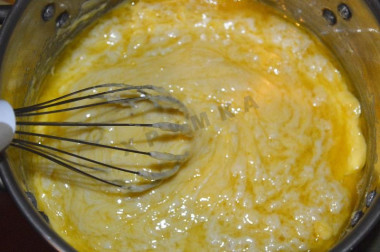
Combine the egg mixture with the chocolate mixture, mix well. Allow to cool
Step 14:
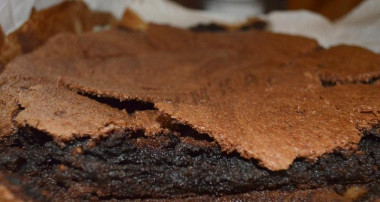
We take the cake out of the oven, let it cool completely and release it from the parchment. We continue to do cream
Step 15:
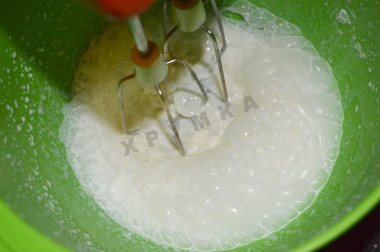
Whisk cream into a fluffy foam
Step 16:
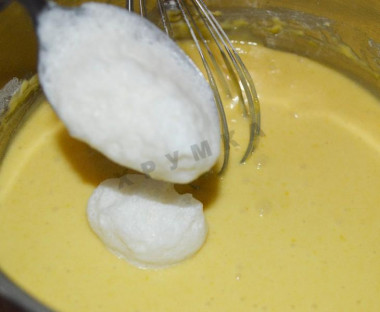
Add a few spoonfuls of cream to the cream mixture, mixing well
Step 17:
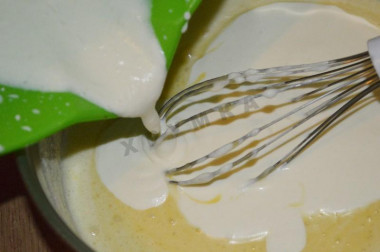
Then enter all the cream
Step 18:
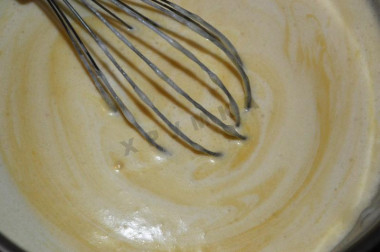
Mix the cream thoroughly
Step 19:
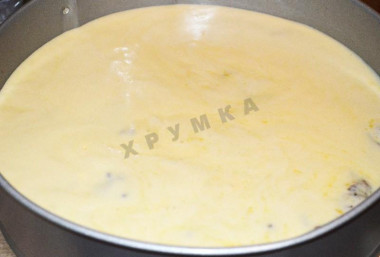
Place the cake in a deep split baking dish, cover with cream, put in the refrigerator for at least an hour.
Step 20:
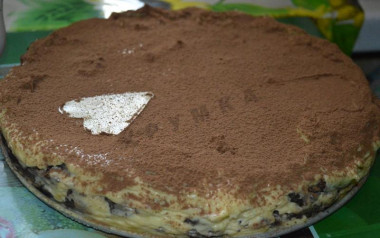
Release the cake from the rim and sprinkle with cocoa, with the help of the blades you can move it to a dish or a cake pan
Step 21:
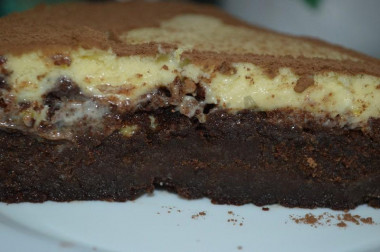
Tasting
Useful notes:
1. Chocolate. White - you can use both ordinary and porous, personally, with porous mousse it seems to me more airy.
Dark chocolate, not porous, can be with or without additives (nuts, waffle crumbs) just not with fillings a la yogurt and so on.
2. Cake. I would call the "basis" who is baking such knows what he is. For a beginner, the cake should not be liquid inside, when we bake it with a toothpick, neither dry nor wet - it means everything is fine.
Baking time needs to be controlled, there are different ovens, but open the door no earlier than 20 minutes, if you are afraid that 170 is a lot for you, put it on 150.
When the cake is baked, do not be afraid, it should resemble a wet sponge cake, if a crust has formed at the top, it's okay.
When we separate it from the parchment, it is better to arm yourself with a spatula, if the base falls apart - fixable, we shift all this into a detachable form (it is better to pour cream in it anyway, so it will not spread, but will freeze gently on top).
We turn on the oven immediately, because the dough will not wait later.
3. Cake formation. I have already written something on top, but there is another trick - you can form a cake in your favorite cake pan or dish if your detachable shape fits in diameter. We put the rim on the selected surface, put the base there and pour the cream. We do all this, provided it is possible to put the cake in the refrigerator.
Have a good cooking to everyone, it's scary only for the first time))
The calorie content of the products possible in the composition of the dish
- Granulated sugar - 398 kcal/100g
- Sugar - 398 kcal/100g
- Butter 82% - 734 kcal/100g
- Amateur unsalted butter - 709 kcal/100g
- Unsalted peasant butter - 661 kcal/100g
- Peasant salted butter - 652 kcal/100g
- Melted butter - 869 kcal/100g
- Cocoa powder - 374 kcal/100g
- Salt - 0 kcal/100g
- Water - 0 kcal/100g
- Cream 35% - 337 kcal/100g
- Cream 40% - 362 kcal/100g
- Vanillin - 288 kcal/100g
- Baking powder - 79 kcal/100g
- Egg yolks - 352 kcal/100g
- Chocolate 70 % - 539 kcal/100g
- Dark Chocolate - 539 kcal/100g
- Chicken egg - 80 kcal/100g
- Instant coffee - 94 kcal/100g
- White chocolate - 554 kcal/100g
